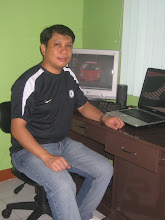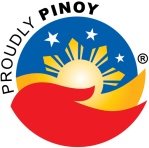Posted on April 6, 2008 by batangrizal
To the present history of “Tala” a certain barrio of the Municipality of Rizal in the Province of Laguna, we have to delve a little bit deeper to trace out the salient features that contributed most to the development of this barrio. In order to meet this objective we should therefore deal briefly with the general history of the town of Rizal in particular.
According to historical records pertaining to the town of Rizal, the said municipality was formerly a barrio of Nagcarlan, Laguna called Pauli, the barrio became the Municipality of Rizal, when Tala became more popularly known to the neighborhood.
Unlike other barrio, Tala has her name unchanged. Its name is known to have been derived from a certain sweet smelling medical plant called “Tala” growing abundantly in the locality. The natives use the juice of the leaves of this plant by mixing it with “gogo” for washing the hair.
There are several sitios within the barrio of Tala. They are Ibayiw, La-lao, Dagatan, Tabla, Mahaguil-haguil and Bunsuran. Although there were no official records preserved, it was popularly believed that the barrio was established during the Spanish regime. According to the old folks the early setters of the barrio of Tala were the following couples: Modesto Isles and Maria Sumague, Crispulo Sumague and Simeona Sumatra, Liberato Sumague and Juanita Conservado. Their respective great grand-children are still living in the barrio and they are the sources of several important information about the barrio.
When the place increased in population the people felt a need for a leader among them. As a result of this development among themselves gradually a succession of barrio lieutenant or teniente del barrio developed. Successively the following men served for the purpose and acted as tenientes. They were: Ciriaco Lucido, Damaso Zuasola, Felix Suaze, Filomeno Isles, Felipe Urriquia, Teodoro Zuasola, Lorenzo Lucido, Moises Prillo, Pedro Sumague and Alfredo Consul, the present barrio lieutenant.
Prior to the Philippine revolution of 1806, there were many people living in the sitios of Ibayiw, Dagatan and La-lao. These sitios were evacuated by the natives because the guardia civil drove them as they often became fields of encounter between the Spaniards and the rebel army. Most of the natives then concentrated in the barrio of Tala. The Sitio of Dagatan got its name from a body of water that looks like a small lake called in Tagalog “Dagat-dagatan”. Whereas, La-lao was attributed to the presence of quicksand called “kumonoy”. Ibayiw’s name is due to its location being situated in a place on the other bank of Mayton Creek. While Tabla, the sitio that was more significant that the others is a battle-term name which means “tie”. Often during the Spanish time this place became battlegrounds not only between Spaniards and Filipino revolutionary army, the Americans and General Emilio Aguinaldo’s fighting men but also among Filipino outlaws. The attributing incident that took place within the vicinity that produced the name “Tabla” was accounted to the warfare between a contrabando tobacco seller called “estranio” and the guardia civil which resulted in neither victory nor defeat for both the conflicting parties.
Aside from having historical sitios such as the sitio of Tabla and Ibayiw where several warfare had happened, Tala as a whole can boast of the many historical significant events which took place there. During the Spanish regime many fields fighting took place there.
During the early part of the American occupation, few encounters had taken place between the new colonizers and the revolutionists. However, this barrio became a major stronghold that openly repulsed the famous advancing American cavalry coming from the town of San Pablo.
Shortly after the conflict with the Americans, a new way of life, a new ideology was introduced to the Filipinos by the new comers. The Filipinos easily adhered to the new principle promulgated by the new conquerors from the west. The Filipinos as a whole realized that this doctrine of democracy is better, a blessing rather than tyranny and oppression and felt for the first time that they were to live under a government of the people, by the people and for the people.
For all of this God-given chances, the Filipinos easily learned to recognize the value of peace and order of the country. No more uprising happened anywhere, anytime even in the blood-soaked ground of the barrio of Tala where once murder, robbery and warfare were just ordinary incidents. Peace and tranquility ruled over the residents of Tala for almost four decade it would have been possible that additional extend of development could have been accomplished in the barrio of Tala were it not for the outbreak of the second global war heralded by the treacherous bombing of Pearl Harbor on December 8, 1941 by the Japanese Imperial Forces.
Residents of the barrio of Tala as well as every Filipino once more suffered the agony and tremor of war.
By this global was which ended in the defeat of Japan has put to a severe test the Filipino traditional loyalty to their country and United States of America. As early as the announcement of the Japanese victory in Bataan in April 1942, many patriotics Filipinos in the archipelago started in the resistant movement. Heading the call to resist the reign of terror, tyranny and oppressions that was being shown in the very eyes of the liberty-loving Filipino people, citizens of the municipalities of Nagcarlan, Rizal, Lilio, Pila and Majayjay, Province of Laguna organized guerilla units and pledge themselves to fight the enemy morally and physically. From anti-Japanese propaganda, the fight for freedom culminated into bloody battles which paved the way for the liberation of the areas were they operated.
The barrio of Tala as well as her natives played a very important rule in this straggle for liberty. During the early stage of the underground movement, the home of Mr. & Mrs Isidro Urriquia, a then Captain of the Fil-American irregular troops, guerilla units who assumed the nom de guerre, “Captain Tala” was the secret headquarters of the guerillas were conferences of vital importance among guerilla leaders were discussed and planned. The same house also served as emergency hospital for the sick and wounded members of the organization period. Col. Eriberto Sombilla, alias Col. Talahib secured protection and nourishment in this house. When he was fatally wounded during an encounter with the Japanese sometimes in the early part of 1944.
By the end of the year 1944, the sitio’s of Ibayiw, Tabla, La-lao in the barrio of Tala, Rizal, Laguna become practically a complete guerilla territory. All Attempts by the Japanese to penetrate into the area and harass the guerillas had ended disastrously for them. The whole territory of Tala and the nearby hills and mountain extending from the western outskirts of San Pablo City through town of Rizal, Nagcarlan, Lilio up to Majayjay came under the armed and administrative control of the guerillas under Col. Alfredo M. David. All the hilly areas of Tala
was the guerillas under Col. David’s military control in the more populated sector, different sanctions were mark as guerilla headquarters, as offices and quarters. Movements within those areas were restricted. Individual permits were necessary as a precautionary measure and outposts were set up at strategic places and trails. It was in this guerilla camp in the barrio of Tala in the thick forest of Sitio Lalao were Majors Howe and Tom and the wife and children of Brigadier General Carlos P. Romulo lived for sometimes with a feeling of security until all of them were pick-up by the place in the adjoining improvised landing field. For everything that the barrio of Tala is concerned during the second World War this are only her principal accomplishment so far.
At the end of this war, the people of Tala once more witnessed a blessing of United States Government by recognizing the members of the guerilla units and gave them the due compensation in accordance with their respective services. It was a boom for the barrio of Tala for great majority of people received financial aid.
Captain Isidro Urriquia who was also recognized in his rank won in the election for mayorship in 1946 without opposition. During his four years term he once more proved to the people that he was not merely a military leader in the town but also a dynamic political figure whose services has made the municipality of Rizal a model in the province. Inspite of the existence of the dissidents, never has the town of Rizal been molested by the Huks. These are
the signs that Mayor Isidro I. Urriquia and his tested fighting men which the majority are from the barrio Tala will always fry to keep their hard earned honor be worthy of the respect of the people.
During his incumbency as a Mayor, he was able to carry out several improvements. The municipal town hall and other public buildings were reconstructed. Coconut industry being the principal means of income of the town is being afforded at first class security. By overwhelming demand, Mayor Isidro I. Urriquia was re-elected in November 1951 to serve for another four years.
The barrio of Tala is proud to have a son not only known by his own people but instead known to the whole province of Laguna for his services. As a mayor who can rarely be equal by his contemporaries in the entire province.
Unlike in 1890-1900, not so many lives disappeared in the war of 1941-1945. The fact could be attributed maybe to the unity of the people when they had not get tested the glory of life under the sunlight of democracy.







